
© Railway Wonders of the World 2012-


The Furness Railway
Modern Developments in the Furness Railway System
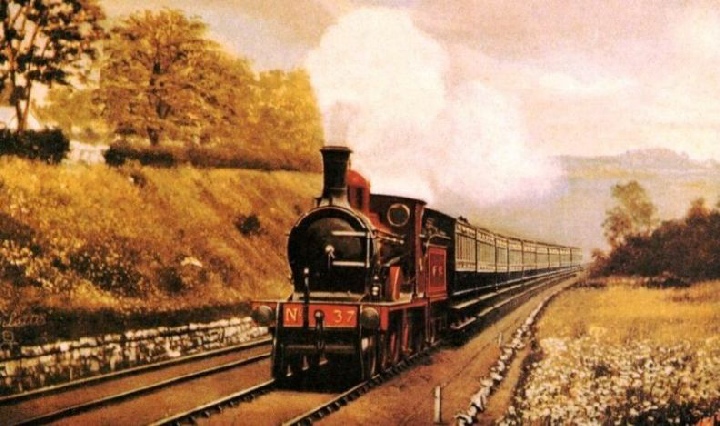
A STANDARD EXPRESS TRAIN on the Furness Railway, hauled by 4-
FOR the first fifty years of its existence the Furness Railway had been almost solely a mineral line, and so prosperous was it that there had arisen little need to unduly trouble about the active development of the passenger traffic. A service of passenger trains more or less sufficient for local needs was run over the railway, and the then management did not consider itself called upon to do more in this direction. But there came a time when the rich beds of haematite iron ore, which had abounded in the district traversed by the Furness Railway, became almost exhausted, and with their disappearance it looked as if the prosperity of the Furness Railway would also disappear. At this critical period, Mr. Alfred Aslett was invited to assume managerial command of the system. What success has attended the numerous improvements introduced by Mr. A. Aslett this chronicle of the development of the Furness Railway shows.
Mr. Aslett, whose managerial life had, up to this time, been largely spent in the arduous task of cultivating passenger traffic on railways with little pecuniary resources to aid his efforts, such as the Eastern and Midlands, and the Cambrian, came to Barrow with the valuable experience gained in the hard school of making bricks without straw.
The Furness Railway, fortunately, enjoyed good financial credit, so that the many improvements that were necessary to bring the system up to the standard of a first-
It was at once seen that to make the railway remunerative it was necessary to develop it upon the passenger side. The district served by the Furness Railway lends itself splendidly to the purpose; the line has the practical monopoly of two of England’s finest lakes. One, Windermere, is by far the most charming of our own lakes, and Coniston is equal to most of the other sheets of water in the Lake district. With two such assets the Furness Railway offers strong inducements to the tourist and holiday-
No time was lost in judiciously calling attention to the geographical advantages enjoyed by the Furness Railway, and at the same time steps were taken to provide suitable accommodation for the visitors it was desired to attract to the district.
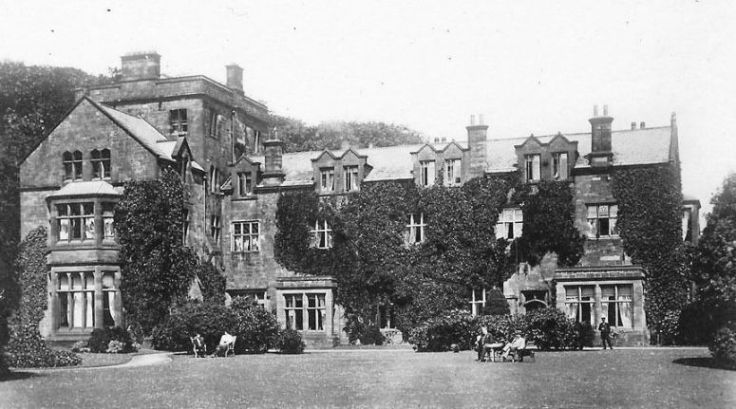
THE FURNESS ABBEY HOTEL.
The passenger rolling stock was of a character suitable for the local traffic, four-
The second class also disappeared from the system, and it is thought by many that the second class will no doubt be abolished by all progressive railway companies in the near future—tourists and holiday makers even to the Lakes are of a democratic temperament in the Twentieth Century, and largely patronise the third class.
No time was lost in increasing the tourist facilities and providing liberal accommodation at extremely low fares. The whole district abounds in delightful scenery, and is crowded with memories of poets and artists and of men who have inscribed their name and fame upon the annals of our land. Wonderful ingenuity has been exercised in devising tours to the places of beauty and interest served by the Furness Railway. When Mr. Aslett assumed command the tours were not many in number; this summer they total twenty, and combine rail, steamer and coach travelling. The fares are extremely low, as will be seen by examples we give later on.
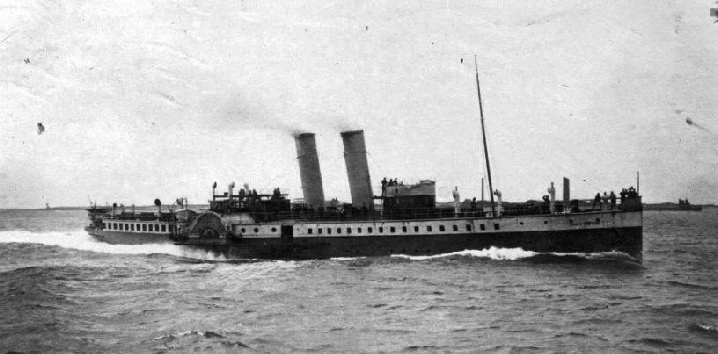
THE PADDLE STEAMER Lady Moyra.
We have already said that nowadays visitors to the English Lakes belong largely to the democracy, but across the broad Morecambe Bay — at Blackpool — are to be found in many thousands, on holidays bent, the dwellers of the manufacturing districts of Lancashire and Yorkshire. Why, queried Mr. Aslett, should not these sons and daughters of toil enjoy the pleasures of a visit to our beautiful English Lakes? The Furness Railway determined to give them the opportunity, so in 1900 the paddle steamer Lady Evelyn was purchased, and in the summer of that year she commenced to ply between Barrow and Fleetwood, with through bookings to and from Blackpool.
By means of judicious advertising at Blackpool, an interest in the beautiful Lake District was awakened amongst the visitors to Blackpool, and during the first year or so no less than 28,000 passengers were conveyed by the Lady Evelyn.
The popularity of the sea, train and lake trips from Blackpool by the Furness Railway steamers and trains speedily became known amongst the visitors to Blackpool, and in 1903 it became necessary to lengthen the Lady Evelyn so that she could carry a larger number of passengers. Two years later a second and larger boat, the Lady Margaret, was put on the Barrow-
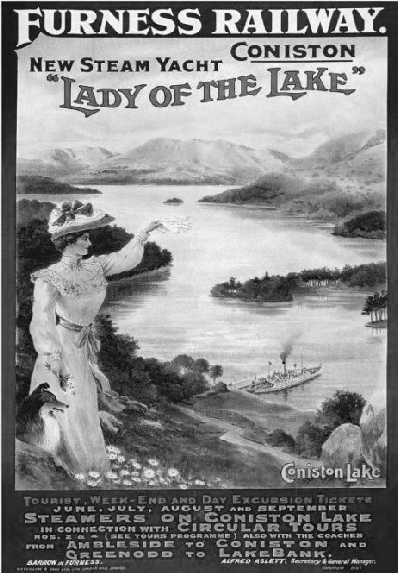 The leading dimensions of these two popular boats are:—
The leading dimensions of these two popular boats are:—
Lady Moyra length 245 ft. ; Beam 29 ft. ; 2,900 h.p. ; Speed 19 knots ; 1,015 passengers.
Lady Evelyn length 200 ft. ; Beam 24 ft. 1 in. ; 1,600 h.p. ; Speed 16 knots ; 714 passengers.
The steamers perform three regular trips in each direction every day, the passage normally occupying hours, although the Lady Moyra has made the trip in 45 minutes.
FURNESS RAILWAY ADVERTISING for trips on Coniston Lake.
One of the most popular of the tours from Blackpool is that known as the “Outer Circular Tour”, performed by train, sea steamer, steam yacht on Windermere, and coach. The whole distance covered is 115 miles, the fare charged being but 8s. Leaving Blackpool at 10.5 a.m., the tourist is conveyed 11 miles by train to Fleetwood, followed by a 16-
Not only has the sea steamer traffic been developed, but very considerable improvements have been made in the Windermere and Coniston steam yachts. On Windermere a large and palatial new yacht — the Swift — was put into service in 1900. This vessel is certified for the large number of 780 passengers, her principal dimensions being:— Length, 150 feet; breadth, 21 feet; engines of 400 horse power; speed, 15 knots. The remainder of the Windermere fleet of the Furness Railway consists of the Tern, carrying 633 passengers; Cygnet and Seal, each 336 passengers; Swan, 442 passengers; and the Raven, a cargo steamer. All these boats are propelled by screws.
For some fifty years the service on Lake Coniston has been performed by the Gondola, a comfortable steam yacht of unusual outline, accommodating 225 passengers. In 1907 it was decided to increase the steamboat accommodation on Coniston Lake, and the Lady of the Lake was constructed for the service. She is a fine yacht of graceful outline, 90 feet long, with a breadth of 15 feet. Her engines develop 240 horse power, her speed being 11½ knots. The Lady of the Lake carries 380 passengers.
For the convenience of private parties wishing to cruise on Windermere, the Furness Railway recently acquired the steam yacht Britannia. The saloons of this vessel are handsomely decorated and furnished. She accommodates 122 passengers, and can be hired by the day or half-
The cost of holiday travel on the Furness Railway and its lakes steamers has been made almost a negligible quantity. On Windermere one can spend a week on the steamers, all day long, for 6s., or 8s. saloon. Family parties are catered for on an even more liberal basis. A weekly lake steamer season for two is 10s., or 14s. saloon; for three, 14s. and 19s.; for four, 17s. and 23s.; and for five, 20s., or 27s. Saloon.
In 1909 tourists’ weekly tickets were introduced over the whole of the system, including the Coniston and Windermere steam yachts. These tickets, which are issued from May 1st to September 30th each year, are available for an unlimited number of journeys during the time they are valid.
A weekly ticket costs 18s. first class, and only 12s. third class; whilst if ordinary return tickets were purchased for the journeys, they would cost 28s. 10d. first class and 17s. 4d. third class for but one journey in each direction, whereas with the seven-
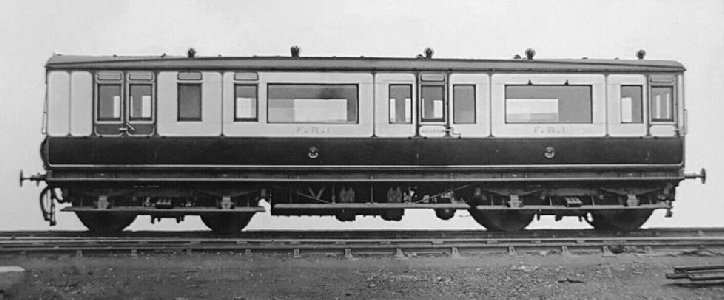
FURNESS RAILWAY SALOON coach No. 1.
The latest development in Furness Railway tours is that which includes a visit to George Romney’s early home. The cottage is situate about two miles from Barrow, and is reached by road vehicle. A few years ago the cottage, which is situate on high ground with picturesque surroundings, was about to be demolished to work the building stone beneath its foundation, when Mr. Aslett conceived the idea of preserving it because of its association with one of our most famous protraitists. The cottage has been restored in facsimile, and already a large collection of pictures, engravings, and articles associated with George Romney are in the Museum attached to the cottage. The curator is simply steeped in legends of the great painter and his works. The grounds attached to the cottage have been laid out in a pleasant manner, and a tea pavilion is about to be added for the convenience of worshippers at the shrine of this famous lake district artist.
In July 1911 the Furness Railway issued a new time-
A feature of the Furness Railway that cannot fail to favourably impress visitors is the substantial nature and artistic character of the stations. Taken as a whole, it would be difficult to find railway stations that excel those on the Furness Railway in these particulars; Grange, Lake Side, Ulverston, Furness Abbey, and Barrow (Central) are types of what stations of various classes ought to be.
The Central Station, Barrow, is the largest on the system; it was enlarged in 1906. It now consists of four platforms and four roads, and covers over 15 acres of ground. The main platforms are each 575 feet in length.
Considerable attention has been given to the signalling during the twentieth century, a noticeable feature in train protection being the illuminated speed restriction boards which are fixed at all spots where permanent speed restrictions are in force. These illuminated boards have been in use on the Furness Railway for several years. Recently some other railways have made use of them, but these safeguards are far from being in general use on our railways.
During recent years very large sums of money have been expended on improving and strengthening the permanent way; indeed, almost the whole line has been rebuilt with steel rails weighing 88 lbs. per yard, against the 80½ lbs. in use in 1900; the sleepers and ballast also have received attention. The main line of the Furness Railway, running as it does along the coast, crosses many tidal estuaries, so that viaducts and embankments are fairly frequent. These are being strengthened, and in some cases rebuilt, the viaduct at Eskmeals being the most recent to receive the attention of the engineer. This viaduct, which is 933 feet in length, was constructed in 1868, and this year has practically been rebuilt. First the horizontal portion or viaduct proper was renewed, and then it was decided to rebuild the vertical piers supporting the viaduct, a work of much difficulty and needing much skill, as it had to be carried out without closing the line for traffic, or even withdrawing any portion of the train service.
The extensive docks at Barrow form an important portion of the system, the water area being 299 acres, of which about 200 acres form the Cavendish Timber Dock, which has recently been leased for naval airship purposes, Vickers’ Naval Airship which was successfully launched in May 1911, having been constructed in a building erected in the Cavendish Dock. The other docks at Barrow consist of the ‘Ramsden’, ‘Devonshire’, and ‘Buccleuch’; the entrance lock to the Ramsden Dock is 100 feet wide, and warships of the super Dreadnought type can easily be accommodated in this dock, and also in the Buccleuch Dock, the water passage way to which was widened in 1910 from
80 to 100 feet for the purpose of affording accommodation for the largest warships. The length of the quays totals 2¼ miles; the quays are equipped with all modern apparatus for efficiently and rapidly dealing with import and export traffic of every description. A mammoth electric crane, which can lift 150 tons, has been installed on the quay of the Buccleuch Dock.
We have already mentioned that the present passenger rolling stock is all modern, and of the most down-
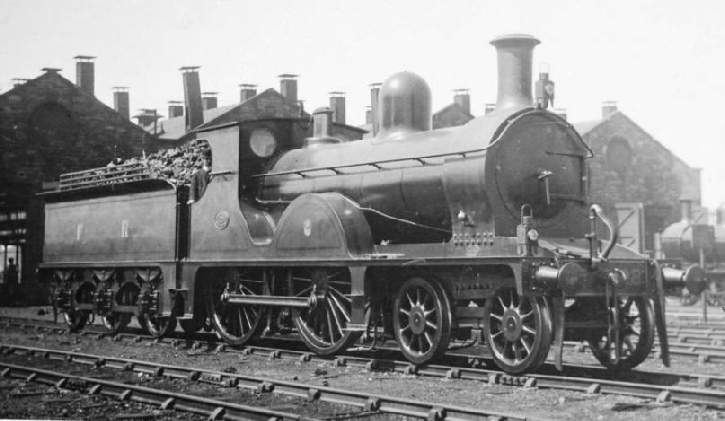
ONE OF THE STANDARD TYPE OF 4-
The remarks as to the modernising of the passenger and goods rolling stock apply with equal emphasis to the Locomotive Department. When Mr. W. F. Pettigrew, the Loco., Carriage, and Wagon Superintendent, assumed control of the Barrow Works in 1897, the locomotives were mostly of small size and power, several having been in work since the line was opened over fifty years previously. In this connection we may mention here that one of these old 4-
Mr. Pettigrew’s first design was for a 6-
In 1904 the 0-
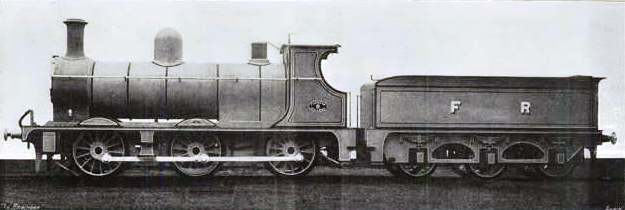
No. 6, ONE OF THE STANDARD 0-
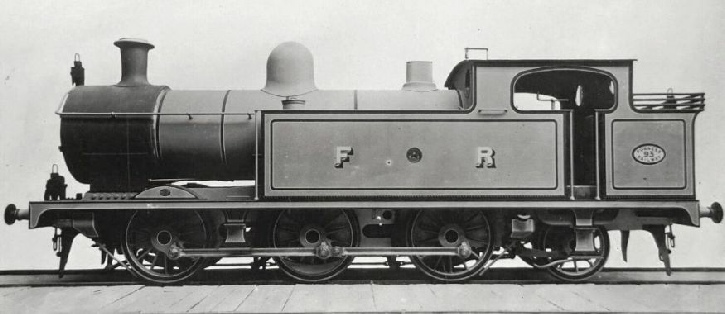
No. 93, AN 0-
The leading dimensions of these types of locomotives are given in the table below.

Mr. Pettigrew has also rebuilt many of the older engines with larger boilers, carrying a higher steam pressure,and added to their equipment modern fittings that enable them to perform present-
Lastly, we have the application of the superheater to some of the engines. This apparatus is not of the German boiler-
Towards the end of 1909 it was decided to fit up four more engines — goods engines Nos. 18 and 14, and passenger engines Nos. 35 and 34 were selected.
Engine No. 18 was fitted and put to work in January, 1910, and No. 14 in June of the same year. These two engines were put on the heavy goods trains running between Carnforth and Sellafield, and Carnforth and Whitehaven, they are still working these trains and the results have been very satisfactory, even better than expected. The average consumption for the engines fitted with the Phoenix Superheater, after running 24,352 miles, being 40.5 lbs. per mile against an average of 53 lbs. for similar engines not fitted with the Superheater and running the same trains, or a net saving of 12.5 lbs., giving 23.5 per cent. The statement set forth below shows how these figures are arrived at.
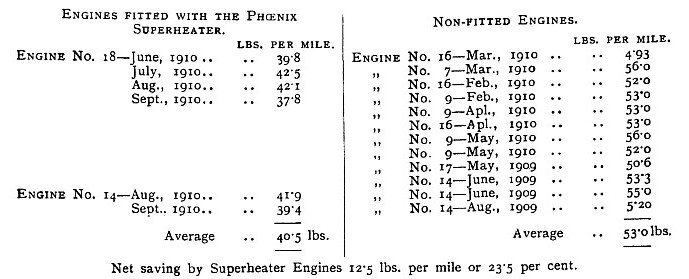
A reference to the lengthy and successful career of the General Manager will form a fitting close to this account of his activities during recent years.
Mr. Alfred Aslett, who is a Justice of the Peace for Lancashire, and has had a life-
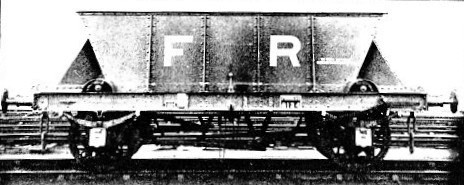
TWENTY-
You can read more on “The London & North Western Railway”, “The Midland Railway” and “Railways and Publicity” on this website.